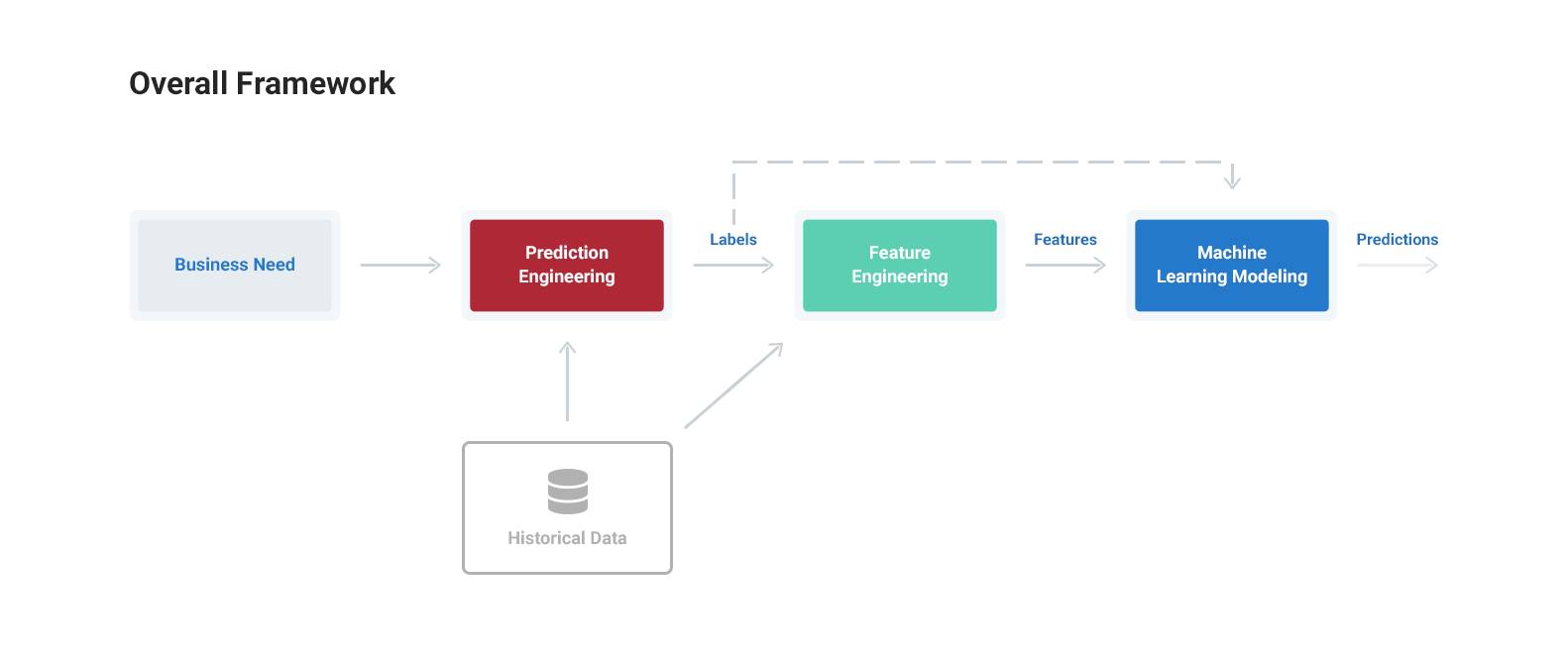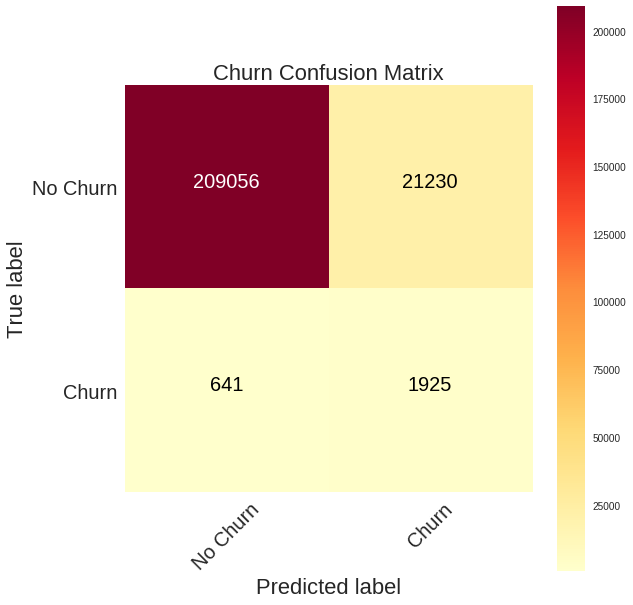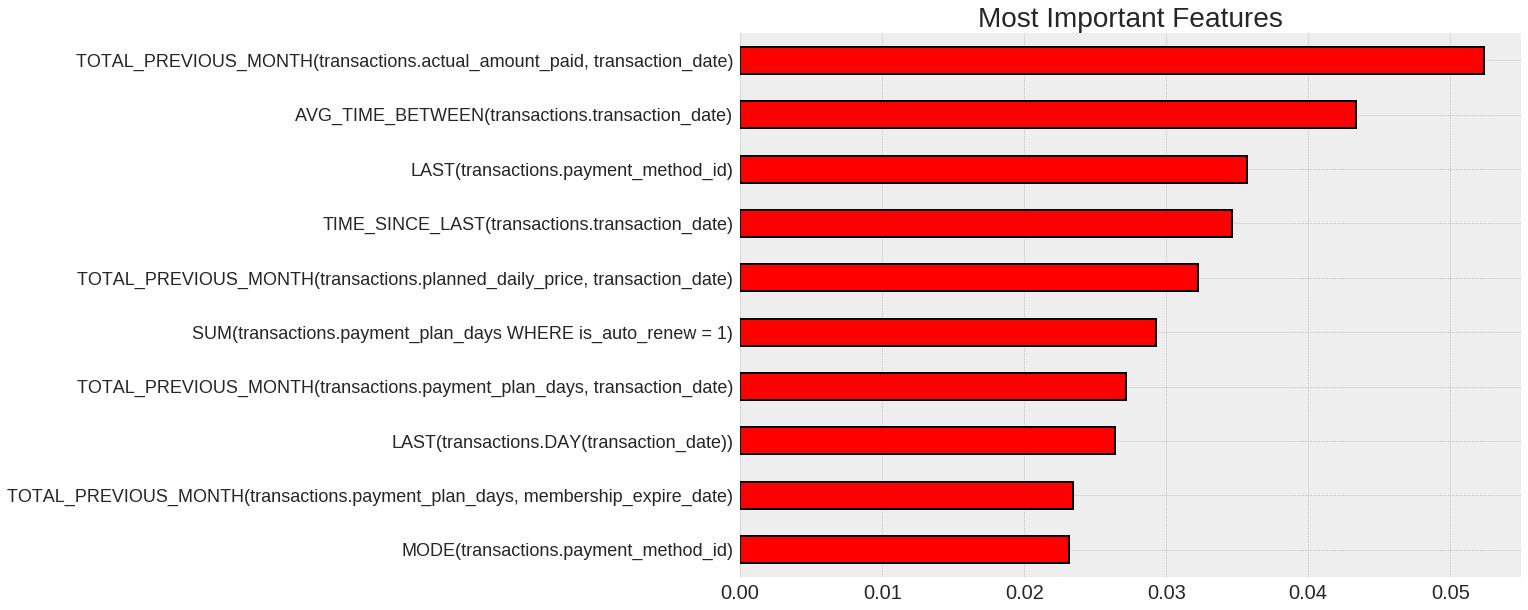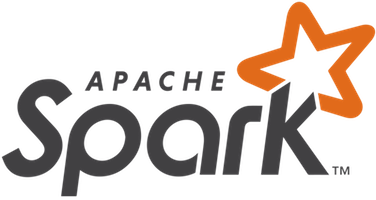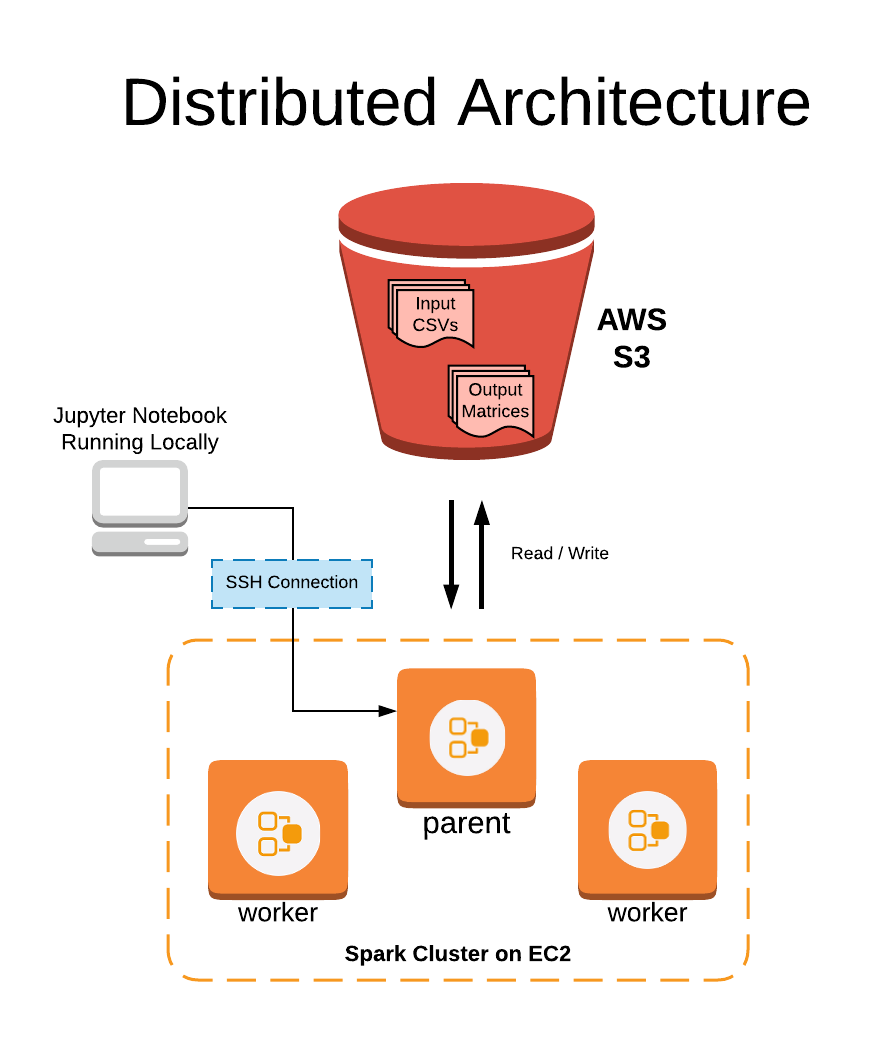A Machine Learning Framework with an Application to Predicting Customer Churn
This project demonstrates applying a 3 step general-purpose framework to solve problems with machine learning. The purpose of this framework is to provide a scaffolding for rapidly developing machine learning solutions across industries and datasets.
The end outcome is a both a specific solution to a customer churn use case, with a reduction in revenue lost to churn of more than 10%, as well as a general approach you can use to solve your own problems with machine learning.
Framework Steps
- Prediction engineering
- State business need
- Translate business requirement into machine learning task by specifying problem parameters
- Develop set of labels along with cutoff times for supervised machine learning
- Feature Engineering
- Create features - predictor variables - out of raw data
- Use cutoff times to make valid features for each label
- Apply automated feature engineering to automatically make hundreds of relevant, valid features
- Modeling
- Train a machine learning model to predict labels from features
- Use a pre-built solution with common libraries
- Optimize model in line with business objectives
Machine learning currently is an ad-hoc process requiring a custom solution for each problem. Even for the same dataset, a slightly different prediction problem requires an entirely new pipeline built from scratch. This has made it too difficult for many companies to take advantage of the benefits of machine learning. The standardized procedure presented here will make it easier to solve meaningful problems with machine learning, allowing more companies to harness this transformative technology.
Application to Customer Churn
The notebooks in this repository document a step-by-step application of the framework to a real-world use case and dataset - predicting customer churn. This is a critical need for subscription-based businesses and an ideal application of machine learning.
The dataset is provided by KKBOX, Asia's largest music streaming service, and can be downloaded here.
Within the overall scaffolding, several standard data science toolboxes are used to solve the problem:
- Featuretools: automated feature engineering
- Pandas: data munging and engineering
- Scikit-Learn: standard machine learning algorithms
- Apache Spark with PySpark: Running comptutations in parallel
- TPOT (Tree-based Pipeline Optimization Tool): model selection optimization using genetic algorithms
Results
The final results comparing several models are shown below:
| Model | ROC AUC | Recall | Precision | F1 Score |
|---|---|---|---|---|
| Naive Baseline (no ml) | 0.5 | 3.47% | 1.04% | 0.016 |
| Logistic Regression | 0.577 | 0.51% | 2.91% | 0.009 |
| Random Forest Default | 0.929 | 65.2% | 14.7% | 0.240 |
| Random Forest Tuned for 75% Recall | 0.929 | 75% | 8.31% | 0.150 |
| Auto-optimized Model | 0.927 | 2.88% | 64.4% | 0.055 |
| Auto-optimized Model Tuned for 75% Recall | 0.927 | 75% | 9.58% | 0.170 |
Final Confusion Matrix
Feature Importances
Notebooks
- Partitioning Data: separate data into independent subsets to run operations in parallel.
- Prediction Engineering: create labels based on the business need and historical data.
- Feature Engineering: implement automated feature engineering workflow using label times and raw data
- Feature Engineering on Spark: parallelize feature engineering calculations by distributing across multiple machines
- Modeling: develop machine learning algorithms to predict labels from features; use automated genetic search tools to search for best model.
Feature Engineering with Spark
To scale the feature engineering to a large dataset, the data was partitioned and automated feature engineering was run in parallel using Apache Spark with PySpark.
Featuretools supports scaling to multiple cores on one machine natively or to multiple machines using a Dask cluster. However, this approach shows that Spark can also be used to parallelize feature engineering resulting in reduced run times even on large datasets.
The notebook Feature Engineering on Spark demonstrates the procedure. The article Featuretools on Spark documents the approach.
Feature Labs
Featuretools was created by the developers at Feature Labs. If building impactful data science pipelines is important to you or your business, please get in touch.
Contact
Any questions can be directed to will.koehrsen@featurelabs.com
